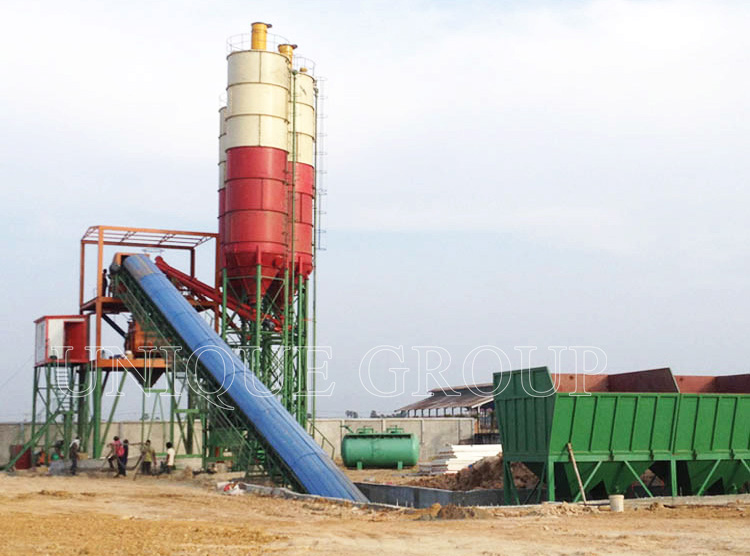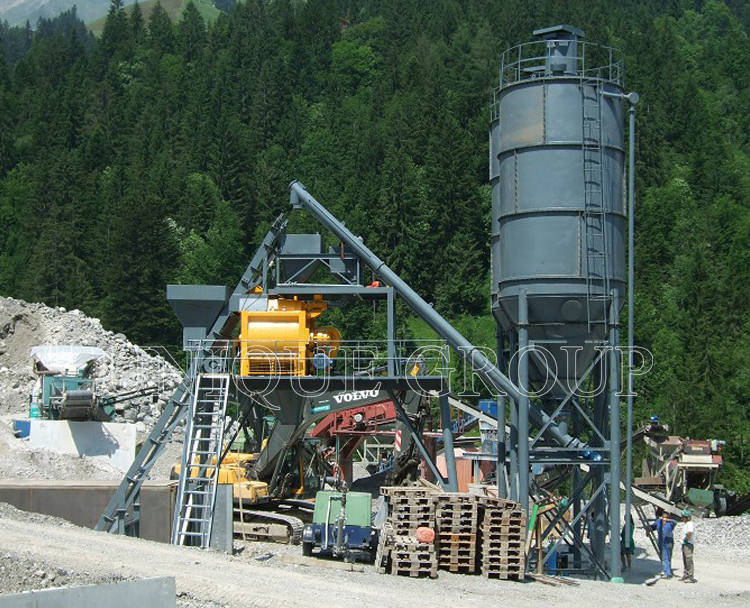How cement is transported to cement silos in batching plant?
2025-07-02 15:58:40Cement Transportation to Silos in Batching Plants: An In-Depth Analysis
In the construction industry, the efficient transportation of cement to batching plants is a critical step in ensuring smooth operations and maintaining the quality of concrete produced. This article explores the various methods of transporting cement, focusing on pneumatic conveying systems and bulkers, while also addressing industry trends, safety considerations, and the importance of proper storage and handling.
Introduction to Cement Transportation
Cement, a key ingredient in concrete, needs to be transported in its powdered form to batching plants from production facilities. The primary methods used for this purpose are pneumatic conveying systems and specialized vehicles known as cement bulkers. These systems offer advantages such as efficiency, reduced dust pollution, and the ability to handle large volumes of material.
Key Methods of Cement Transportation
1. Cement Bulkers: The Backbone of Cement Transportation
Cement bulkers, resembling fuel tankers, are specifically designed to transport cement in powder form. These vehicles are equipped with air compressors and discharge systems that allow for the controlled release of cement into the batching plant’s silos. The advantages of using bulkers include:
- High Capacity: Bulk trucks can carry large quantities of cement, reducing the number of trips required.
- Reduced Handling: Direct transfer from the truck to the silo minimizes the risk of contamination and loss.
- Cost-Effective: Bulk transportation is generally more economical than bagged cement due to lower packaging and handling costs.
2. Pneumatic Conveying Systems: Efficient and Clean
Pneumatic conveying systems utilize air pressure to move cement through pipelines from the truck to the silo. This method is particularly effective for batching plants with multiple silos, as it allows for centralized control and reduces the need for manual handling. Key components of a pneumatic system include:
- Air Compressors: These devices generate the necessary pressure to propel the cement through the pipelines.
- Feed Pipes: Specialized pipes that connect the truck to the silo, ensuring a smooth flow of material.
- Filters and Dust Collectors: To minimize dust emissions during the transfer process.
3. Other Methods: A Brief Overview
While bulkers and pneumatic systems are the most common methods, other techniques such as mechanical conveyors (e.g., belt conveyors and screw conveyors) are also used in specific scenarios. These methods are often chosen based on factors like plant layout, distance, and the need for flexibility.
Step-by-Step Process of Cement Transportation
1. Cement Delivery
Cement bulkers transport the powdered cement to the batching plant. These trucks are equipped with air compressors that are essential for the pneumatic transfer process.
2. Connection to Silo
Upon arrival, the truck’s discharge system is connected to the silo’s feed pipe. This connection ensures a sealed and controlled transfer of cement.
3. Pneumatic Transfer
The truck’s air compressor activates, pushing the cement through the pipeline and into the silo. This process requires precise control to avoid air pressure fluctuations that could damage the system or cause spillage.
4. Silo Filling
Once the cement reaches the silo, it is stored until needed for concrete production. The silo’s design, including its airtightness and pressure management, is crucial to prevent moisture ingress and maintain cement quality.
5. Discharge for Concrete Production
When concrete is required, the cement is discharged from the silo using mechanical means such as screw conveyors. This process ensures a consistent flow of cement into the mixer.
Industry Trends and Innovations
The cement transportation industry is continuously evolving, driven by the need for efficiency, safety, and environmental sustainability. Some notable trends include:
- Automation: Advanced control systems for pneumatic conveyors are improving efficiency and reducing the need for manual intervention.
- Sustainable Solutions: The use of electric-powered vehicles and systems that minimize energy consumption and dust emissions is on the rise.
- Smart Silos: Modern silos are equipped with sensors that monitor cement levels, moisture content, and other critical parameters, allowing for real-time adjustments and maintenance.
Safety Considerations in Cement Transportation
Transporting and handling cement involves inherent risks that must be managed carefully. Key safety considerations include:
- Vehicle Safety: Regular maintenance of bulk trucks, including checks on air compressors and tires, is essential to prevent accidents during transportation.
- Proper Handling: Workers should be trained in the safe operation of pneumatic systems and the use of personal protective equipment (PPE) to avoid inhalation of cement dust.
- Emergency Protocols: Establishing clear emergency procedures for equipment failure, dust explosions, or other incidents is crucial for protecting personnel and equipment.
- Environmental Controls: Dust suppression systems and proper ventilation in silos help maintain a safe working environment and comply with environmental regulations.
The Role of UNIQUEMAC in Cement Transportation
At UNIQUEMAC, we understand the complexities involved in cement transportation and storage. As a professional concrete plant manufacturer, we prioritize the use of state-of-the-art pneumatic conveying systems and bulkers to ensure the quality and consistency of our concrete products. Our commitment to innovation and safety sets us apart in the industry, allowing us to deliver reliable and high-quality concrete solutions to our clients.
Conclusion
The transportation of cement to batching plants is a critical process that requires careful planning and execution. By leveraging advanced pneumatic systems, bulkers, and safety measures, UNIQUEMAC ensures the seamless flow of cement from production to storage, contributing to the efficiency and quality of our concrete manufacturing operations.
For more information on how UNIQUEMAC can support your construction needs, visit our website or contact us directly.
PRODUCT TYPE LIST
NEWS
Contact Us
Address:Industrial Equipment Zone,Zhengshang Road Zhengzhou Henan
Zip: 450000 China
Fax:+86-371-63935058
E-mail:sales@unique-cons.com
TEL:+86-371-63699132








